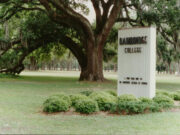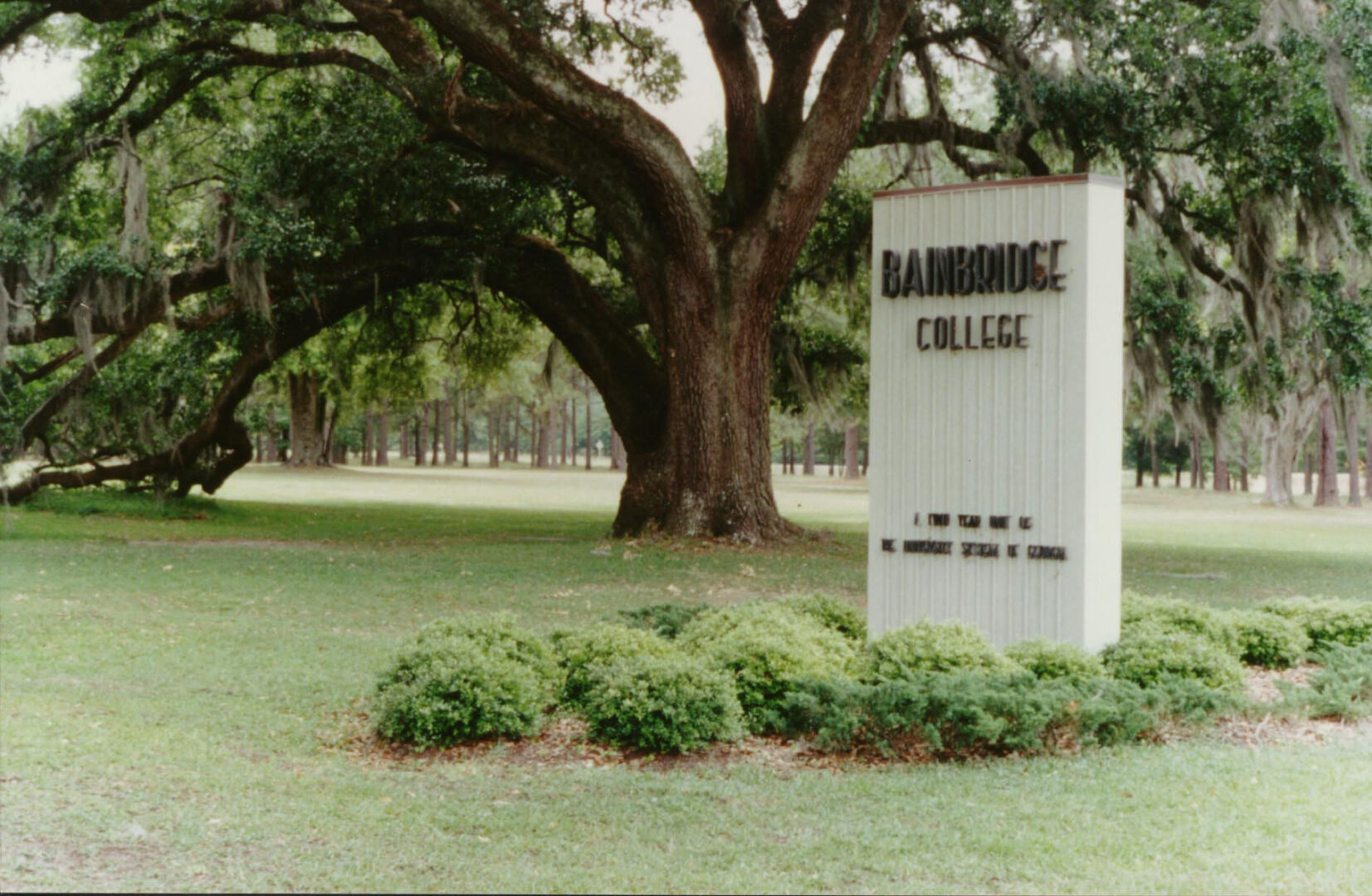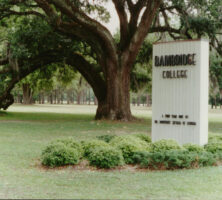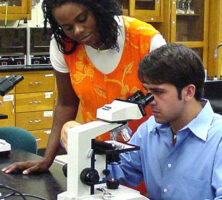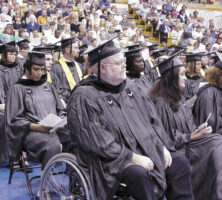Nestled among stately pines and moss-draped oaks in southwest Georgia, Bainbridge State College is a two-year college of the University System of Georgia. Bainbridge State offers both academic transfer degrees and technical career certificates and degrees. Since 1973 the college has been an integral part of the Bainbridge community.
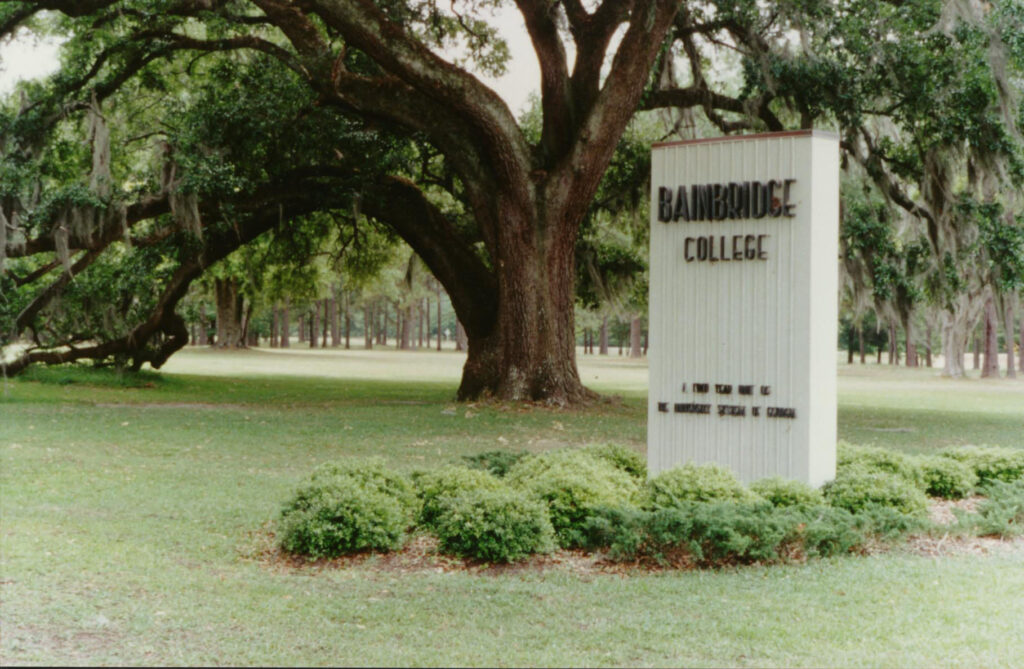
Photograph by Jan Godwin, Bainbridge State College
History
After the Board of Regents of the University System of Georgia authorized the establishment of a college in Decatur County and offered to fund the operational costs of the college, the regents asked several local communities to provide 150 acres of land, ensure access to utilities, and float a bond issue to fund building construction. Raymond Miles, the Bainbridge chamber of commerce representative, was asked to organize a group to present a response to the regents. In December 1970, two months after the delegation’s presentation, Bainbridge was named as one of six sites for junior colleges in the state.
In 1971 Governor Jimmy Carter’s chief of staff, Charles Kirbo, pledged to provide a tract of land close to town, allowing the regents to lower the bond issue amount. Sixty-eight percent of county residents approved the bond, and construction of the first five buildings at Bainbridge Junior College began in July 1972. The newly appointed president, Edward Mobley, hired faculty, recruited students, and reviewed curriculum that year. College business was conducted on cardboard desks and borrowed chairs in temporary offices in downtown Bainbridge until the first campus buildings opened on August 16, 1973. The 217-member charter class of the college began classes on October 1, 1973; in all, more than 6,000 credit students enrolled during the first decade.
A unique agreement between the Board of Regents and the Georgia Department of Education added the Division of Vocational/Technical Education program in 1973-74, followed by the Department of Developmental Studies. In 1980 these programs occupied a new $1.6 million facility, and in 1990 the name of the division was changed to the Division of Technical Studies.
In 1987 the Board of Regents removed the word “Junior” from the names of all two-year colleges in the university system. That year Bainbridge College became the second college in the country to be designated a Bicentennial Campus by the Commission on the Bicentennial of the U.S. Constitution. Modular classroom buildings dubbed the Oak, Pine, and Maple Centers were added to house classrooms, offices, and distance learning facilities. A 2,000-square-foot lighted outdoor performance area named Center Stage was built in 1995. The Southwest Georgia Youth Science and Technology Center opened in 1996 in the Dogwood Center as one of ten throughout Georgia and the only one with its own building.
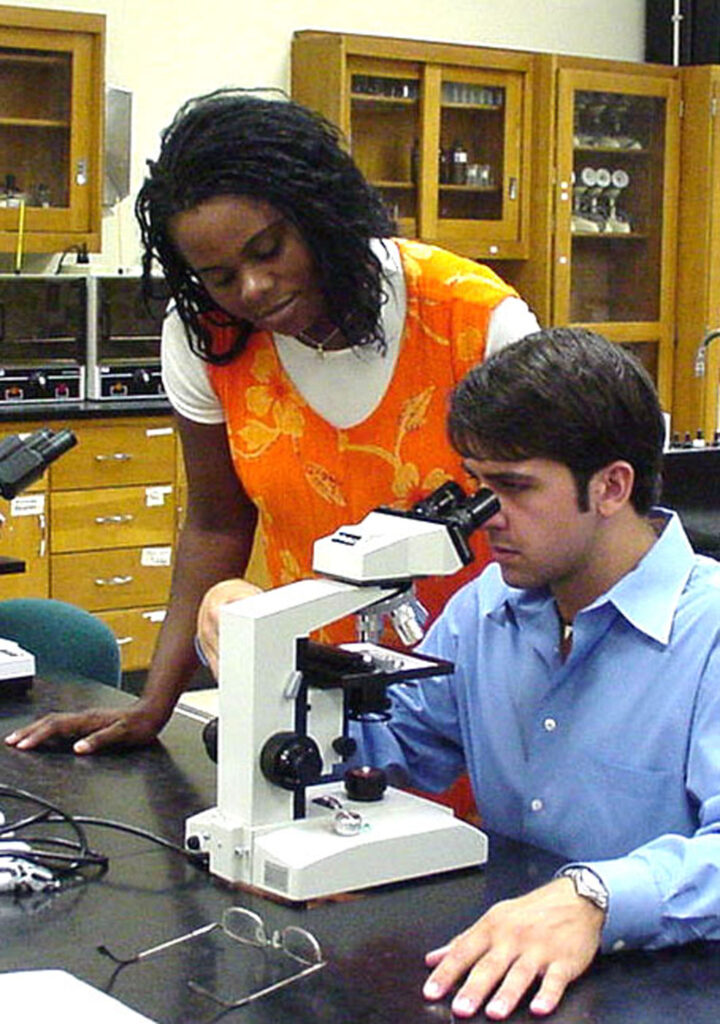
Photograph by Valerie Beynon, Bainbridge State College
In 1999 Clifford Brock became the college’s second president, serving until 2005. Thomas A. Wilkerson succeeded Brock as president until 2011, when Richard Carvajal took office. Construction on the Charles H. Kirbo Center, the first new building for the campus since 1980, began in 2003. The 26,000-square-foot structure includes a 250-seat auditorium, a 96-seat dining room, classrooms, offices, meeting rooms, two audio/video studios, a catering kitchen, an amphitheater, and a courtyard and lobby that hold a capacity of 1,700 people.
In 2013 the institution’s name changed to Bainbridge State College.
Students and Faculty
The rustic campus environment has sparked admiration from visitors and accolades from visiting accreditation teams and dignitaries. The campus has no residence facilities, and students travel from the nearby towns of Attapulgus, Blakely, Brinson, Cairo, Camilla, Climax, Colquitt, Donalsonville, Iron City, Pelham, Thomasville, and Whigham. Some students also commute from neighboring Florida and Alabama communities.
The Bainbridge State faculty has one of the highest percentages of earned doctorates among two-year system institutions. Members of the faculty are active in professional and civic organizations and have accumulated a significant publication record.
Traditional and nontraditional students take advantage of the educational opportunities provided by Bainbridge State, which provides flexible scheduling for swing-shift workers; online, evening, weekend, and off-campus classes; a strong developmental studies department; a peer tutorial program; professionally staffed computer laboratories; and various specialized workshops to help students improve academic skills.
In fall 2007, 2,783 students attended classes on the main campus, online, and at several off-campus locations.
Mission
Bainbridge College’s mission is threefold: to provide transfer degrees, technical programs, and public service/ continuing education courses. The college assists in area economic and community development programs and has established collaborative relationships with local businesses, industries, and cultural/civic groups. The college also supports local public education by sponsoring various academic and technical competitions and by offering ongoing cultural programs, including lectures, art exhibits, and theatrical and musical performances for both students and the community.
In addition to its own offerings in academic transfer and technical areas, Bainbridge College provides educational opportunities for area residents through its continuing education, joint degree programs with nearby technical colleges, upper division and graduate offerings with Albany State University, and distance learning transmissions from other academic institutions and governmental and professional agencies.
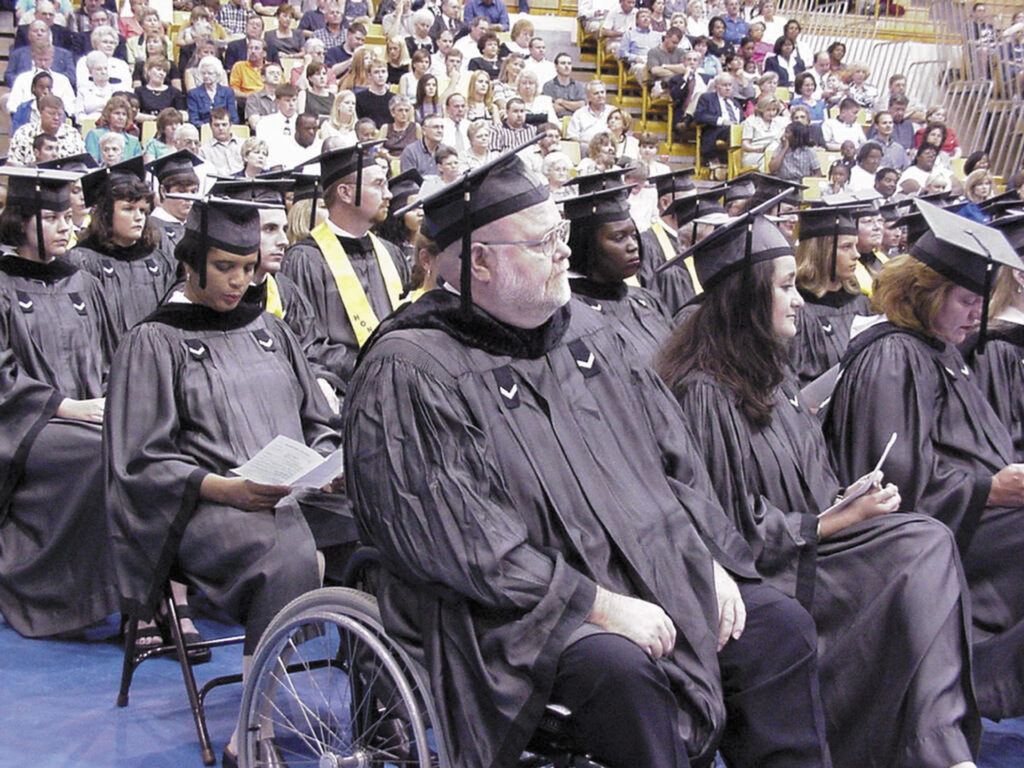
Photograph by Valerie Beynon, Bainbridge State College
As an evolving institution, Bainbridge College’s plans for the future include expanding the technological aspects of the learning environment, developing existing campus facilities, and establishing assessments of institutional effectiveness and educational outcomes.


